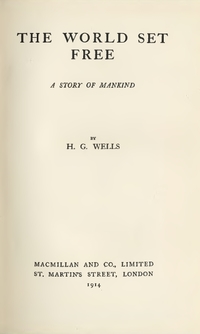#TheWorldSetFree
The World Set Free
The World Set Free is a novel written in 1913 and published in 1914 by H. G. Wells.David C. Smith, H.G. Wells: Desperately Mortal: A Biography (New Haven and London: Yale University Press, 1986), p. 83-85. According to Smith, Wells wrote The World
Read More..
by H. G. Wells
Ratings
Likes
Reviews
Popularity
Ranks
This #hashtag is not ranked yet.

